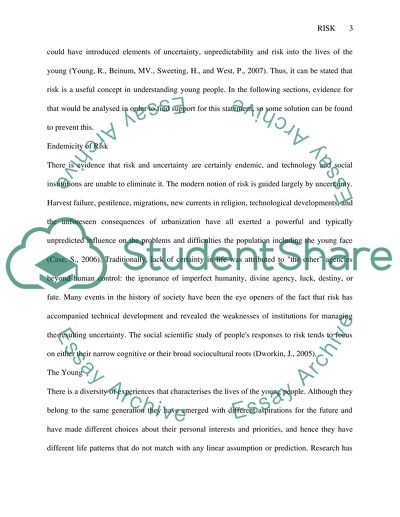Cite this document
(“Risk Behavior in Youth Essay Example | Topics and Well Written Essays - 2500 words”, n.d.)
Retrieved from https://studentshare.org/miscellaneous/1522453-risk-behavior-in-youth
Retrieved from https://studentshare.org/miscellaneous/1522453-risk-behavior-in-youth
(Risk Behavior in Youth Essay Example | Topics and Well Written Essays - 2500 Words)
https://studentshare.org/miscellaneous/1522453-risk-behavior-in-youth.
https://studentshare.org/miscellaneous/1522453-risk-behavior-in-youth.
“Risk Behavior in Youth Essay Example | Topics and Well Written Essays - 2500 Words”, n.d. https://studentshare.org/miscellaneous/1522453-risk-behavior-in-youth.


